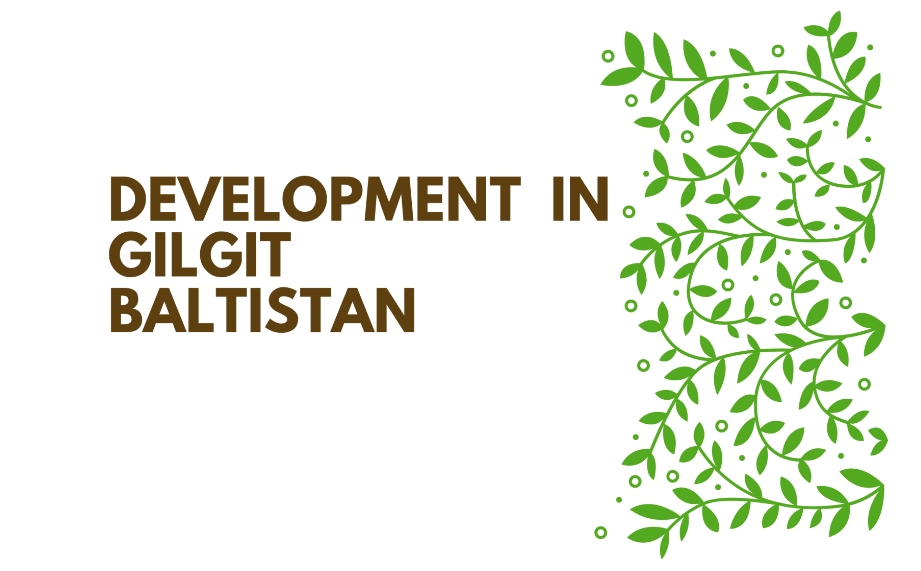Sustainable Development
Community-Based Trophy Hunting Programs in Gilgit-Baltistan: A Sustainable Solution for Wildlife Conservation
Published
1 year agoon
By
Imran Ali
Wildlife Conservation Challenges in Gilgit-Baltistan
Gilgit-Baltistan, a mountainous region in northern Pakistan, is renowned for its awe-inspiring mountain landscapes and stunning natural beauty. The region is home to an array of wildlife, including the elusive Snow Leopard, the majestic Himalayan ibex, and the striking Markhor, among others. With this diverse range of flora and unique fauna, Gilgit-Baltistan is home to several rare and endangered animals, such as the Snow Leopard, the Asiatic Ibex, Marco Polo sheep, and Himalayan musk deer.
Despite the rich biodiversity and conservation value of the region, its wildlife faces several conservation challenges due to a variety of human activities, including poaching, habitat destruction, and climate change. In recent years, illegal hunting and habitat destruction have been rampant, posing significant threats to the region’s wildlife. However, through collaborative efforts and effective conservation measures, the region’s wildlife can be protected and preserved for future generations to appreciate and enjoy.
The Impact of Unregulated Hunting and Habitat Destruction
Unregulated hunting resulted in the brink of extinction of some species in certain villages of Gilgit-Baltistan. If you walk through the region today, it’s not uncommon to see the remains of this era of unregulated hunting. Most houses still have hunted animal heads and horns hanging on their walls. Poachers hunted these animals for their meat, hides, and other body parts, while communities destroyed their habitats for timber, agriculture, and settlements. The unrestrained hunting and habitat loss resulted in the decline of several wildlife populations, some of which were on the brink of extinction.

Community-Based Trophy Hunting Programs: A Solution to Conservation Challenges
The situation started to change when community-based trophy-hunting programs were introduced in the region. These programs incentivize local communities to conserve wildlife by providing them with direct financial benefits. This is because the revenue generated from hunting permits is invested back into the local community. The programs also help control the population of certain species, ensuring their long-term survival.
Pros of Community-Based Trophy Hunting
Conservation of wildlife: Trophy hunting programs incentivize local communities to conserve wildlife by providing them with direct financial benefits. The revenue generated from hunting permits is invested back into the local community. The programs also help control the population of certain species, ensuring their long-term survival.
Economic benefits: Trophy hunting programs bring significant economic benefits to local communities. The revenue generated from hunting permits provides a source of income for rural communities, which often lack access to employment opportunities. This helps reduce poverty and increase the standard of living for the people.
Empowerment of local communities: Community-based trophy hunting programs empower local communities by giving them control over the management of their natural resources. By participating in decision-making processes and benefiting from the revenue generated, local communities are motivated to protect their wildlife and maintain the health of their ecosystems.

Cons of Community-Based Trophy Hunting
The controversy surrounding ethics: The practice of trophy hunting is controversial, with some people believing it is unethical to kill wildlife for sport. This has led to a negative perception of community-based trophy-hunting programs, which can hinder their success.
Criticism from animal rights activists: Community-based trophy hunting programs have been criticized by animal rights activists, who argue that hunting for sport is cruel and should be banned. This has led to increased scrutiny of the programs and calls for them to be abolished.
Limited scope: Community-based trophy hunting programs are limited in scope and may only benefit a small number of communities. They may not be suitable for all regions and may not be the best solution for conserving all wildlife species.
Success Factors for Community-Based Trophy Hunting Programs
Gilgit-Baltistan’s community-based trophy hunting programs have come a long way since their inception, and their success is a result of several factors. For one, the local communities have been at the forefront of these programs and have taken ownership of them. They have recognized the value of conserving wildlife and have actively participated in the process. Additionally, the government has played a vital role in partnering with the local communities to implement and regulate the programs. This partnership has led to the development of effective policies and guidelines that govern the programs and ensure their long-term sustainability.
Furthermore, rigorous monitoring and evaluation of the programs have been the major factors in their success. This involves regular assessments of the impact of the programs on wildlife populations as well as the socioeconomic benefits that they provide to local communities. The information gathered through these evaluations is used to make data-driven decisions and adjust the programs as needed. In addition to monitoring the effectiveness of the programs, there is also a focus on building local capacity to ensure the long-term success of conservation efforts.
It includes training and educating local communities on sustainable practices and providing them with the resources they need to continue to implement these practices in the future. By involving local communities in the conservation process, the programs have been able to build strong relationships and create a sense of ownership over the protected areas. This, in turn, has led to greater cooperation and support for conservation efforts, ultimately leading to their success.
Examples of Successful Conservation Programs Around the World
Many success stories from around the globe demonstrate the effectiveness of conservation programs. For example, the African Parks Network has successfully restored and protected wildlife populations in several African countries, including Rwanda, Malawi, and Chad. The organization works in partnership with local communities to establish and manage national parks and reserves, which provide a safe habitat for threatened species such as elephants, lions, and gorillas.
Another success story is the reintroduction of the grey wolf to Yellowstone National Park in the United States. After being hunted to near extinction in the early 20th century, grey wolves were reintroduced to the park in 1995. Since then, the population has grown, and the wolves have had a positive impact on the ecosystem, helping to control the population of other animals such as elk and coyotes.

Conclusion
Conservation programs play a crucial role in protecting wildlife and preserving natural habitats. These programs require collaboration and support from governments, NGOs, and local communities to be successful. By implementing a combination of approaches such as habitat restoration, anti-poaching efforts, and sustainable tourism, conservation programs have the potential to make a significant positive impact on both the environment and the communities that depend on it. Continuous monitoring and evaluation of these programs are critical to ensure their success and make data-driven decisions that lead to long-term sustainability.

About Author
Imran Ali
The writer is a co-founder of The Karakoram Magazine, currently holding the positions of managing editor and chief marketing officer. Additionally, he is a nuclear scholar fellow at the Centre for Security Strategy and Policy Research (CSSPR) and can be reached at aleee.imran@gmail.com.
You may like
-


KIU’s formative impact catalyzes a series of significant accomplishments: Syed Sibt-e-Hassan’s Success Story
-


Dr. Adeeba’s Resilience: A Journey of Triumph and Inspiration
-


Embracing Challenges: Gul Rukhsar’s Remarkable Journey
-


Humira Karim: A Proud alumnus of Department of Chemistry KIU
-


Traditional women’s dresses of Gilgit-Baltistan
-


Shuqa Simple but amazing winter clothing of Gilgit-Baltistan
Opinion
Development Planning in Gilgit-Baltistan – The Missing Link {A reflection}
Published
8 months agoon
September 5, 2023
Mr. Sajjad Hyder, Chief Economist, Planning & Development department has recently retired from his service after serving almost three decades, commencing from April 1993 to November 30, 2022. He, as Chief Economist, was responsible for leading public Investment management policies for designing and implementing various socioeconomic development projects and programs in the region. Moreover, concoction of substantive policies for socioeconomic development in all sections was also part of his job responsibilities.
The retired officer, Mr. Sajjad Hyder, has shared the following reflection, regarding public investment management in GB, which is based on his 30 years of exposure as a development planning practitioner:
Development Planning in Gilgit-Baltistan – Missing Link
Historical background: The development economics was born immediately after the second world war with the birth of the Breton Woods international financial system to facilitate development and eradicate poverty in the countries that were emerging out of colonialism. The Planning commission Pakistan was formally established in 1953 with the Harvard Advisory Group (HAG) officially became its coach soon after. Based on their methodology, the country introduced formal 5-year planning in 1955 which with periodic interregnums continues until today. In Gilgit-Baltistan, development planning starts with the inception of 2nd Five Year plan by establishing a Planning Cell in 1971.
It is not out of place here to say that most of the project cycle management components in GB have fallen into misuse, while others have developed serious defects. Following are the major gaps, in my observation over last 30 years with the department:
REASONS OF INEFFICIENCY IN DEVELOPMENT PLANNING IN GILGIT-BALTISTAN:
As indicated earlier, Public Investment Management in Gilgit Baltistan starts from 2nd five-year plan. This system served well the needs of this region in
early stages as the planning & development department was an empowered organization headed by a development commissioner in BS 20. Over time, however, the system developed several problems due to degradation of the organization in view of successive political developments in the region. Presently, Gilgit-Baltistan’s PIM system (development planning) is mere shadow of the concept given by the Harvard Advisory Group, meaning, in capacity, influence and effectiveness.
To understand the sources of inefficiency, it is necessary to review all the stages in the public investment process to identifying gaps and weak points in the processes and procedures.
Guidance and Screening: Identification and screening components of PIM are badly compromised due to atrophy of economic planning in Gilgit-Baltistan. Three broad factors were mainly responsible for the waning performance of the PIM system in GB:
1) Rigidities of the PIM system: The structure of the economy changed from a public sector led to a private sector led economy. This structural changed called for a different role of the planning system, in general, and particularly, the role of P&DD. This required different skills and competencies than what are available with the department. 2) Dominance of crisis management over economic management: As projects started to slow down due to economic policy and planning adopted in firefighting mode. Longer term planning as well as public investment became casualties of the crisis mode which has preoccupied the GB Government for the last several years.
3) A sharp decline in the capacity of the PIM system in GB: With no medium-term plan or strategy available to define the sectoral and sub-sectoral priorities of the government, the project identification process became largely ad-hoc, with identified projects reflecting more the priorities of political leadership than those established through a well thought out plan. The void left by abandonment of the planning process is largely filled by the politicians, where a large number of projects are identified by politicians, or by the line-departments on directives of the politicians.
Ironically, the Planning Commission manual, provides ample guidance for identification, appraisal, and implementation of various programs / projects but of no use in GB.
Project Preparation and Appraisal: In the beginning, the quality of project preparation and appraisal was quite satisfactory. However, over time, these functions weakened, mainly due to following reasons:
- With mounting fiscal difficulties, the line departments faced an increasing
squeeze on their operational (recurrent) budget. Inclusion of a project into
the ADP therefore became a mode of getting additional fiscal resources
for the line departments, from which it can finance some of operational
needs left unmet by inadequate recurrent budget. There was therefore a
big enough incentive for the line departments to get as many as possible
projects into the ADP as soon as possible. This forced them to cut
corners on project preparation and pull all strings and levers to get project
approved. {Roughly, only 3 percent of development expenditure goes to create or acquire physical assets, whereas 31 percent is spent on operation expenditure}. - Political intervention in the development process increased adversely
affecting the quality of project preparation and the moral of
development-related staff in the departments and P&DD. There never has been any tradition in GB of undertaking ex ante or ex-post independent reviews of the preparation and appraisal process even for important projects. - “Games” in the project preparations and approval processes: Limited capacity of the P&DD to properly appraise projects has given rise to some “gaming” behavior within the line departments to get whatever they want from the project approving authorities by deliberately include unwanted expenditure items (e.g. a large number of vehicles) in the project design just to distract the P&DD’s appraisal team to focus on these items, leading to a less than required focus on other areas and costs of the project. {The end result is leading to implementation delays, changes in scope and design of the project, cost overruns and consequently loss in benefits from the projects}.
- Project Selection and Budgeting: Once a project is included in ADP in principle, administrative and political wheels start moving to get the project approved, irrespective of whether funds for the project are available or not, and it is technically viable or otherwise. This leads to a number of projects making into the ADP with insufficient (at time a “token” allocation). This allocation is usually not even enough to pay for the
salaries of the project staff. Moreover, this also leads to thin spreading
of resources across other projects. As such, many projects get under-financed, which causes implementation delays, and a large throw-forward. A large throw-forward leaves little room for the incoming new government to implement its development agenda with full vigor. This has created a number of implementation issues undermining the efficiency of public investment.
Project Implementation: Project Implementation has been a weak area in GB. For ADP projects, shortcomings in project identification, preparation, appraisal, and approval processes make implementation very difficult. In addition, projects are usually managed by staff taken form regular cadres of government, with limited project management skills.
At times project management is assigned as an “additional responsibility” along with the person’s normal work. Moreover, procedures governing project financing, procurement and contracting are overly cumbersome. Hence, implementation delays and the consequent cost escalations are a norm rather than an exception for ADP.
Public Procurements: Weak procurement practices remain one of the major reasons for inefficiencies in public expenditure, including public investments as procurement is a highly technical subject. In addition, the volume of public procurements is huge, both in size and number. There are not enough skilled procurement specialists within the GB Government to manage all these procurements. Moreover, weak accountability and defective bidding and contract documents have given rise to corrupt contracting procedures and practices which directly undermine the efficiency of public expenditure in general, and particularly public investment.
Monitoring & Evaluation: Despite being a function mandated to both the line departments and the P&DD, project monitoring requires considerable improvements. To date, most of monitoring that is undertaken relates to inputs and compliance with procedures and processes, output and impact monitoring continues to be considered as outside the purview and mandate.
Project Completion and Service Delivery: Although procedures for completing a project and soliciting operational resources are well laid out, yet they are hardly ever followed. Project completion report (PC-IV) is filed only in cases where the project requires recurrent expenditure allocation to be operational. Following are the reasons for inadequate allocation of operational budget to a newly completed project:
i) Weak estimates of operational resources: While preparing the PC-I, the line
departments deliberately understate the recurrent expenditure implications of
the project. This is done to improve the chances of getting the project
approved and included in the development budget. The finance authority
takes these estimates very seriously when making operational allocation after
completion of the project.
ii) Implementation delays not only lead to escalation in project cost, but also in recurrent expenditure required to make the project operational.
iii) Inadequacy of R&M allocations lead to deterioration in quality of service
delivered by the projects, reducing value for money under projects.
Missing Links in Functioning of Planning & Development Department: P&DD GB has thus become a project approval body where most of the projects are not identified based on technical considerations or as part of a shared approach to maximizing growth and welfare. These developments adversely impacted the value for money under development.
At all stages of the project, P&DD is supposed to keep track of performance. However, this tracking is now not happening to maximize project performance. At the project initiation, the PC1 form requires a full cost-benefit and economic analysis of the project to be presented to the approving bodies, after scrutiny by the sections.
When the project is complete the sponsoring agency must send a completion report, the PC4. Seldom is this report completed and hence there is little evaluation of the work done and its proper costing. After 5 years of the completion of the project, an evaluation report, PC5, reports on the performance of the project comparing it to the stated expectations set out in the PC1. Once again, these reports are seldom if ever completed. Altogether, role of P&DD is to approve projects and maintaining expenditure management afterwards.
Too Many Projects, Too Little Return
The technical details of policy and projects such as basis of evidence, cost-benefit,
rates of return and rigorous feasibility or sensitivity analysis have gradually been
withdrawn from senior policymaking forums. Looking strictly at the project
development and management system, several weaknesses have crept into the system, lowering their impact and rate of return.
These are:
1) Projects are approved without due diligence. Feasibilities, cost-benefit analysis, spatial determination, and several other details are often subject to political or other considerations. Approvals are pushed through with executive fiat.
2) Projects frequently have large cost overruns. Using a selection of ADP projects overruns are frequent and quite large. This is a combination of poor project management, infrequent delays leading to cost escalation as well as poor initial preparation.
3) Excessive focus on brick and mortar. The bulk of the investment is in hard infrastructure such and link roads are the biggest components. Even in the social sectors and other sectors, departments are interested in brick and mortar and even the approval process favors that.
(To be continued by highlighting proposals for improvement)
Mr. Sajjad Hyder joined P&DD, as Research Officer (BS-17), in 1993 and worked in all the sectors of economy, undertaking research studies and region’s policy development initiatives for socioeconomic development. Main research studies include: Northern Areas Strategy for Sustainable Development, in collaboration with IUC Pakistan, Norther Ares Report on Participatory Poverty Assessment in collaboration with planning commission Pakistan, and Gilgit Baltistan Economic Report {Broadening the Transformation}, a joint venture with ADB and world bank. His contribution in major project interventions include Pakistan Social Action Program, under which significant impact was seen in primary education, primary health care and rural water supply and sanitation in this region. Altogether, Mr. Sajjad Hyder, as young officer {that time}, had acted a leading role in SAP interventions as a catalyst.
In the years ahead, Mr. Sajjad Hyder, was elevated to the positions of Assistant Chief (BS-18), Deputy Chief (BS -19), and Chief Economist (BS-20), having commendable contribution (s) in the socioeconomic development of Gilgit=Baltistan.
About Author
Sajjad Hayder
The writer was the Chief Economist, Planning and Development Department, Government of Gilgit-Baltistan, who recently retired from his service after serving almost three decades. He, as Chief Economist, was responsible for leading public investment management policies for designing and implementing various socioeconomic development projects and programs in the region.
Opinion
Challenges in Delivering Services in Gilgit-Baltistan
Published
9 months agoon
August 1, 2023By
Muazam Sapru
In November 2021, I joined the Soni Jawari Center for Public Policy (SJCPP) as a Junior Scholar. The SJCPP was newly established at the time, and its primary goal was to conduct policy-oriented research on how to improve the performance of public services in Gilgit-Baltistan. The SJCPP also aimed to develop partnerships with development agencies and advise the government of Gilgit-Baltistan on policy issues. As part of its work, the SJCPP began collecting data and consulting with stakeholders to identify the challenges that institutions face in delivering social protection services in Gilgit-Baltistan. The SJCPP’s first stakeholder consultation session was held on January 3, 2023, with government officials from both provincial and federal organizations. The second stakeholder consultation session was held with representatives from civil society, the private sector, and beneficiary organizations. These workshops were organized to develop a social protection policy for Gilgit-Baltistan. In this article, we will explore the challenges that institutions face in delivering services, with a specific focus on social protection services.

Firstly, Social protection services in Gilgit-Baltistan are not available in all areas, especially in remote and hard-to-reach communities. This is due to the fragmented geography of GB, with many valleys located in far-flung areas that lack road access and network facilities. Service providers find it difficult and costly to reach these areas, so they often focus on providing services in urban areas. This problem could be addressed by developing infrastructure in remote areas, such as building roads and improving telecommunications. Service providers could also hire more staff to reach these areas.
Secondly, there is a lack of coordination between service providers in Gilgit-Baltistan, leading to overlapping services. This is because there is no central database of all regional beneficiaries. As a result, some beneficiaries receive services multiple times, while others do not receive any services at all. One solution to this problem is to create a central database of all beneficiaries in Gilgit-Baltistan. This would allow service providers to coordinate their efforts and ensure that no beneficiary is left behind. Moreover, there is a need to improve communication and collaboration between service providers. This could be done through regular meetings and workshops.
During the workshops, we learned that there is no clear definition of who is eligible to receive social protection services in Gilgit-Baltistan. This is a problem because it can lead to services being provided to people who do not need them, while those who are most in need may be excluded. Well-defined beneficiary identification criteria are essential to ensure that social protection services are targeted to those who need them most. These criteria should be based on objective factors, such as income, assets, and vulnerability. They should also be transparent and easy to understand so that people can be sure that they are eligible to receive services.
Further, for the beneficiary identification process, the provincial departments need to coordinate with LSO, community organizations, and village organizations because they are in a better position to identify poor people/households in their respective rural areas.
Another challenge that service providers face in Gilgit-Baltistan is the lack of internet connectivity in remote areas. This lack of connectivity creates a barrier to effective communication and service delivery. For example, service providers may not be able to access online databases or communicate with other service providers in real-time. This can lead to delays in service delivery and can make it difficult to target services to those who need them most. The government of Gilgit-Baltistan should work to improve internet connectivity in remote areas. This could be done by investing in infrastructure, such as building new towers and laying fiber optic cables. The government could also provide subsidies to internet service providers to make internet access more affordable.
In conclusion, there are a number of challenges that institutions face in delivering social protection services in Gilgit-Baltistan. These challenges include limited geographical coverage, overlapping of services, lack of beneficiary identification criteria, and lack of internet connectivity. These challenges can make it difficult to target social protection services to those who need them most. The government of Gilgit-Baltistan should work to address these challenges by developing infrastructure, improving coordination between service providers, and clarifying beneficiary identification criteria. The government should also work to improve internet connectivity in remote areas. By addressing these challenges, the government can help to ensure that social protection services are delivered effectively to those who need them most.
About Author
Muazam Sapru
The writer is a Development Fellow at the Ministry of Planning, Development, and Special Initiatives.
Current Affairs
Unlocking Economic and Strategic Benefits: The Gwadar-Kashgar Railway Project
Published
12 months agoon
April 28, 2023
The Gwadar-Kashgar railway project is a significant infrastructure project that will connect the deep-water port of Gwadar in southwestern Pakistan to the city of Kashgar in China’s northwestern Xinjiang region. The project is part of China’s Belt and Road Initiative (BRI) and is expected to bring significant economic and strategic benefits to both Pakistan and China. In this article, we will explore the economic and strategic benefits of the project, as well as some of the environmental, security, financial, and geopolitical implications of the project.
Economic Benefits:
The Gwadar-Kashgar railway project is expected to transform the economies of both Pakistan and China. The project will provide a more efficient and cost-effective way of transporting goods between the two countries, opening up new trade routes and creating new job opportunities. The project will also have a transformative impact on the economy of Gilgit-Baltistan, providing new avenues for growth and development in the region. The railway line will connect China’s western region to Pakistan’s Gwadar port, giving China access to the Arabian Sea and a new trade route to the rest of the world. This will provide new markets and create new opportunities for economic growth and development.

Strategic Benefits:
The project will enhance Pakistan’s strategic importance as a key player in the region, with the potential to bring in significant investments and enhance its position as a regional power. It will also improve Pakistan’s energy security and reduce its dependence on existing trade routes that are vulnerable to geopolitical risks. The project will provide China with a new trade route to the Arabian Sea, diversify its energy supply, and enhance its strategic presence in the region. The project will also have broader strategic benefits for the wider region, helping to enhance regional stability and reduce the potential for conflict.
Security Concerns:
The Gwadar-Kashgar railway project, as a major infrastructure project, raises several security concerns. The project passes through some areas that are currently affected by security concerns, including Balochistan and Xinjiang. These areas have experienced various incidents of terrorism, separatism, and unrest in recent years, which could pose a security threat to the project.
The security of the project will be a key concern for both Pakistan and China. Pakistan has faced significant security challenges in the past, particularly in its Balochistan province, where separatist groups have been active. These groups have targeted various infrastructure projects, including the Gwadar port, which has faced security threats in the past. Therefore, ensuring the security of the Gwadar-Kashgar railway project will be a major challenge for Pakistan.
Similarly, Xinjiang, China’s westernmost province, has faced security challenges in recent years, particularly with regards to its Uyghur population. The Chinese government has been accused of human rights violations against the Uyghurs, and there have been reports of violent incidents in the region. The project’s route passes through Xinjiang, and there are concerns about the potential for security incidents in the region that could disrupt the project’s construction or operation.
Furthermore, the project could also have broader security implications for the region. The project’s proximity to Iran and Afghanistan, two countries with complex security situations, could pose additional security risks. The project could also be vulnerable to cyber-attacks, particularly given its reliance on digital technologies and infrastructure.
To mitigate security risks, both Pakistan and China will need to take steps to ensure the security of the project. This could involve deploying additional security personnel, implementing stricter security measures, and collaborating with local communities to address security concerns. The project’s planners will need to conduct a thorough risk assessment to identify potential security threats and develop appropriate mitigation strategies.
The security of the Gwadar-Kashgar railway project is a major concern, given the security challenges in the areas through which it passes. Pakistan and China will need to take proactive steps to ensure the security of the project and mitigate potential security risks. By doing so, they can help ensure the successful completion and operation of the project, and unlock its significant economic and strategic benefits.
Financing and Funding:
The cost of the project is estimated to be around $58 billion, making it one of the largest infrastructure projects in the world. The project’s funding and financing arrangements will be a key consideration, and it is likely that a combination of public and private financing will be used to fund the project.
Geopolitical Implications:
The Gwadar-Kashgar railway project has significant geopolitical implications for the region, particularly in terms of its impact on the balance of power in South Asia and Central Asia. The project will not only strengthen economic ties between China and Pakistan but also have wider implications for the region’s security and political landscape.
Firstly, the project could lead to a significant shift in the balance of power in South Asia. The railway will provide China with a direct link to the Arabian Sea, which will help it bypass the strategically vulnerable Malacca Strait and reduce its dependence on the South China Sea for maritime trade. This will enhance China’s economic and military presence in the Indian Ocean region, and could potentially pose a challenge to India’s traditional dominance in the region.
Secondly, the project will increase Pakistan’s strategic significance for China. Pakistan is already a key partner in China’s Belt and Road Initiative, and the completion of the Gwadar-Kashgar railway project will further strengthen their strategic partnership. This will enhance China’s ability to project its influence in the region, particularly in the context of the China-India rivalry.
Thirdly, the project will have significant implications for Central Asia. The railway will provide China with a direct link to the resource-rich Central Asian states, which are strategically located at the crossroads of Asia and Europe. This will enable China to expand its economic influence in the region and challenge Russia’s traditional dominance in Central Asia.
Fourthly, the project could potentially exacerbate existing tensions in the region. The project passes through areas that are affected by security concerns, including Balochistan and Xinjiang, and could potentially exacerbate ethnic and religious tensions in the region. Additionally, the project could potentially heighten tensions between India and Pakistan, particularly given India’s concerns about China’s growing influence in the region.
The Gwadar-Kashgar railway project has significant geopolitical implications for the region. While the project has the potential to strengthen economic ties between China and Pakistan and unlock significant economic and strategic benefits, it also poses potential security risks and could potentially exacerbate existing tensions in the region. The project’s planners will need to carefully consider these implications and develop appropriate mitigation strategies to ensure its success
Environmental Impact:
The Gwadar-Kashgar railway project has the potential to cause significant environmental damage, particularly to sensitive ecosystems in Gilgit-Baltistan. It is important for the project’s planners to take steps to minimize the environmental impact of the project.
Conclusion:
The Gwadar-Kashgar railway project is a major milestone in the economic and strategic partnership between Pakistan and China. The project has the potential to transform the economies of both countries, as well as the wider region. It will provide a new trade route to the rest of the world, opening up new markets and creating new opportunities for economic growth and development. The project will also have significant strategic benefits, enhancing the strategic importance of both Pakistan and China and reducing their dependence on existing trade routes that are vulnerable to geopolitical risks. However, it is important to consider the environmental, security, financial, and geopolitical implications of the project as well. By doing so, we can ensure that the project delivers on its promise of unlocking economic and strategic benefits for all stakeholders
About Author
The Karakoram Magazine
The Karakoram Magazine seeks high-quality, unpublished,nonfiction, first person articles relevant to Gilgit-Baltistan and topics as varied as Geo Strategic & Economic Significance of GB, Arts & Literature, Tourism & Hospitality, Culture and heritage, Education and technology, Health & Wellbeing, Climate Change and Wildlife, Economic & Trade, Sports & Recreations, Youth & Women empowerment and Achievements of Illustrious People of GB in different fields etc.

Discover the Unparalleled Beauty and Culture of Gilgit-Baltistan

KIU’s formative impact catalyzes a series of significant accomplishments: Syed Sibt-e-Hassan’s Success Story




